These COVID times have made us much more aware of the space between ourselves and others. We are constantly reminded to keep our distance by the messages, the dots and dashes on the floors, and the diagrams at noticeable places that illustrate the dimension graphically. The instruction to keep one’s distance at ‘x’ metres or feet sounds very certain and precise, but on reflection it turns out to be very vague. Like the Golden Mean proportions of the Parthenon that classical scholars and Le Corbusier identified, and the mystical numbers and dimensions of the cathedrals - see: https://voussoirs.blogspot.com/search?q=GOLDEN+MEAN - the magic and wonder of the relationships are crystal clear and precise, and are used to further expound other theories; but exactly what the dimensions are as physical facts remains unclear. The diagrams might appear to be accurate and useful, as with the COVID signage, but one is frequently confronted with vague concepts and subtle uncertainties that lie concealed in things revealed, with careful consideration, as being awkwardly ill-defined.
Buildings might be presented beautifully as photographs and drawings, and inspire confidence, but it is the raw experience that highlights the reality when one faces the circumstance as real place; as street; as material fact - the texture; the light; the mass; the mess; the grime; the spider's webs; the dust; the graffiti; the cracks; the peeling; the actual detail; the joint; the fixing; etc. Things that one thought one knew with a degree of clarity and certainty, now explode into a different realm of knowing.
So it is that, with the measuring tape in hand, one has to decide exactly where to take the dimension from. The question with buildings begins with: do I put the tape on the face of the wall; on the moulding; the face of the column; or do I gauge the centre of the column or the wall? If I was to try to check the magic proportions of a place, where might I begin – inside or outside? The diagrams that ‘prove’ the fact being claimed are usually small in scale and ignore wall thicknesses, as though this width did not matter. Frequently the lines turn out to be one metre wide when properly scaled, leaving one to wonder about just what is being referenced. Doubt slowly arises in the source of the mathematics that present calculations with a surprising accuracy, to several decimal points, to prove the point. The irony is that everything begins with uncertainty to create the essential ‘proof.’
In the same way one can consider the dots and stripes on floor. These are accurately placed at the required distance, 1.5M e.g. , but what does the ‘required distance’ really mean? Here one turns to the graphics for confirmation of the verbal declaration, and becomes more confused. While the certainty of the dimension is clear, with arrows determining the limits, one soon discovers that just what these limits refer to is very vague. Is the distance that between two people with arms down, raised, or akimbo? Which is it, the edge of the body, the limit of the extended body part, or the centre line of the person that becomes the datum? Is it the leg, the foot, the neck, or the head that is being identified by the arrow as the location for the definition of the dimension? The dots and dashes suggest that it might be the centre line of the body, but the diagrams all seem to suggest something different, referencing something like the space between. Even with the dots and dashes there remains the question as to whether one should toe the line, stand on it centrally, or to one side. Leaving everyone to choose means that the distances will all vary, sometimes less, sometimes more. Does anyone care?
If the required distance is the dimension between two people standing vertically with arms down as though on military parade, then one has to point out that the floor markers should be more like two metres apart if the 1.5M body clearance is to be obtained. With the distance being that between arms outstretched or akimbo, the floor markings would have to be more like 2.5m to 3.5M apart: but even this calculation needs to assume the direction the bodies might facing, with there being a marked difference in distance between two bodies with arms outstretched, facing the same way, say south or north, and two facing different directions, like north and east, or south and west.
While the instruction to maintain a certain distance is quite clear as a set of words, the application of this direction leaves everything more than vague, in a true muddle. There is just not enough information. We lie to ourselves about our understanding, but never question the certainty. We just roll along with the message in the same way as we accept the Golden Mean figures and believe in the slick photograph; in ME as MY selfie: ME as star; the building as masterpiece. We stand on dots as though we know that we have kept our distance as illustrated nearby, not realising how bizarre the situation really is.
The dots on the floor remind one of those on the floor in the Jewish Museum in Berlin. Here red dots have been used to illustrate the path through the maze, such is the confusion of this plan, in the same way as IKEA uses its directional code to assist with its commercial maze. The COVID dots carry the message of distance rather than direction, but play a role in muddling everything very well while exhibiting a sense of certainty and precision, allowing everyone to believe that they are complying with the rule.
It all might sound trite and picky, just too tricky, but numbers are precise. Things on a building site would turn out a complete shambles if information on dimensions and relationships were communicated in this manner. If we are going to turn apparently precise statements into general nonsensical fuzz, then we are making a shambles out of our whole world, turning everything into things potentially fake, and allowing interpretations to skew anything and everything. We have seen this happening in the world today where truth and fact are turned into fantasy, and vice versa; both in life and in art and architecture too.
Certainty might be evasive in our fuzzy world but we need to make a better attempt to get closer to it if we want science to be respected. The ‘antis’ will always use every opportunity to prove that their position is correct, irrefutable, with such uncertainty allowing facts to be tortured and twisted into a mental chaos, leaving everyone thinking that they alone are correct. This shambles shatters relationships, civilization itself, because it is agreement that binds. If we are uncertain about things and can never agree on anything, then democracy is shattered. Little wonder that art and architecture are in such a state today when no one knows or can agree on just what might be shared. We are left with individual heroics to be separately admired, alone: community has gone; cities become collections of singular buildings all declaring their bespoke qualities.
If we struggle to be clear about a very simple instruction to keep a certain distance, then we have a problem. The muddle only encourages every variation of quirkiness that further confuses, transforming things that lie close to the truth into lies. Things may never be certain in any absolute way, but if we cannot establish a circumstance where there is clarity and agreement, we are left floundering in a world of constant political spin. No wonder mental health problems are growing exponentially; and that the numbers not wearing the mandated masks are increasing.
One has to think about the communication of information to a contractor. The accuracy and clarity of this is essential for right understanding, right action, and right outcome. Pretending that everything is OK, and that matters ‘can be sorted out on site,’ or that everyone will know what to do, somehow, only always postpones the thinking/decision-making process, passing the responsibility on to others: it never goes away. In the same way, we need clarity for ‘right living’ - for ‘right thinking’ and ‘right action,’ as the Buddhists know very well. The defining of the rules for distance make this very clear.
31 December 2021
P.S.
So how might the distance be best defined? On reflection, it is the vertical axis of the body that is the best reference as it accommodates all variations with the limbs and other body movements without any impact on the specified distance : the space between bodies will always vary. One recalls the central strength of the axis in the Vitruvian man, and the Axis Mundi too. It is the one identifiable location that holds both a physical place and a symbolic reference too, being like the ‘I’ of the ‘I am.’
I







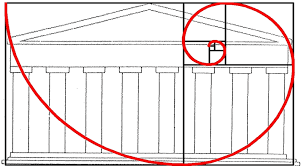
















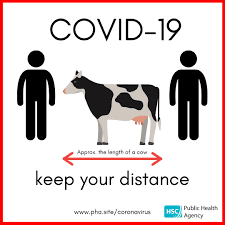


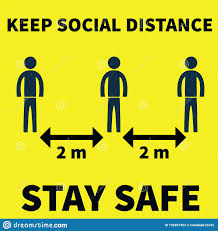
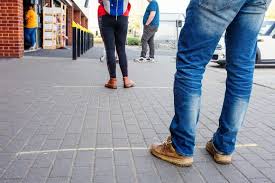
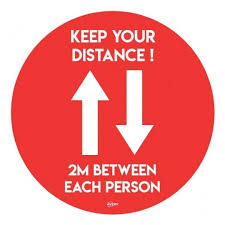
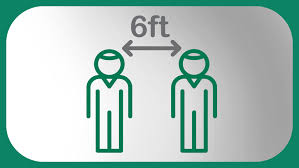

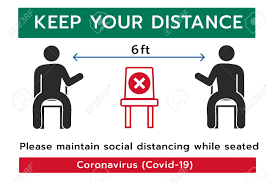

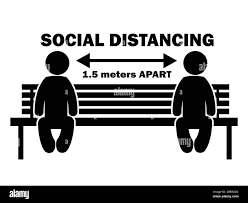












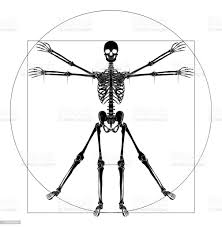
No comments:
Post a Comment
Note: only a member of this blog may post a comment.